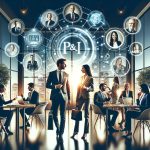Virtual reality (VR) has transformed from a sci-fi fantasy into a leading edge of today’s consumer technology, offering immersive experiences that blur the lines between digital and physical worlds. As an expert in technology and gadgets, this article delves into the exciting world of virtual reality gadgets, exploring the latest advancements, practical uses, and future potential of VR technology.
What are Virtual Reality Gadgets?
Virtual reality gadgets encompass a range of devices designed to place users inside digital environments. These can include VR headsets, motion controllers, sensor-equipped gloves, and even treadmills for virtual movement. These devices work together to simulate sensory experiences such as sight, sound, and touch, making the virtual feel real.
Current State of VR Gadgets
- VR Headsets: The cornerstone of VR technology, headsets like the Oculus Quest, HTC Vive, and PlayStation VR, provide high-definition immersive experiences. They are equipped with sophisticated tracking technology to monitor the user’s movements and adjust the virtual environment accordingly.
- Motion Controllers: These devices allow users to interact naturally with the virtual environment, enhancing the realism of the experience. Advanced controllers now include haptic feedback to simulate the sense of touch, adding depth to the VR experience.
- VR Treadmills and Motion Platforms: For a full-body experience, VR treadmills enable users to walk or run in a virtual space while staying physically in place. These platforms are becoming increasingly sophisticated, offering new ways to move and explore in VR.
Applications of VR Gadgets
- Gaming: VR has revolutionized gaming, providing a level of immersion impossible in traditional gaming setups. Games like Beat Saber and Half-Life: Alyx showcase how VR can create compelling, interactive experiences.
- Education and Training: VR is used for educational purposes, providing a dynamic way to learn and practice skills. From virtual field trips to medical procedure simulations, VR enhances learning by making it interactive and realistic.
- Virtual Tourism: With VR, people can explore distant lands and historical sites from the comfort of their homes. This technology is proving especially useful in times when travel is restricted.
- Fitness and Sports: VR fitness programs and sports simulations allow users to exercise in an engaging and entertaining environment, proving that fitness can be fun and virtual.
The Future of VR Gadgets
As technology progresses, the potential for VR continues to expand. Future developments may include even more seamless integration of VR with other sensory experiences, such as smell and taste. Additionally, as hardware becomes more affordable and software more advanced, VR will become more accessible to a wider audience, potentially becoming as commonplace as smartphones.
Challenges and Considerations
Despite its promise, VR technology faces challenges such as motion sickness, high costs, and the need for significant physical space to use safely. Overcoming these barriers will be crucial for widespread adoption.
Exploring the virtual realm with VR gadgets not only captivates the imagination but also expands the possibilities of what technology can achieve. As we continue to innovate and refine these devices, virtual reality is set to revolutionize our digital interactions, offering new ways to play, learn, and connect with the world around us.






